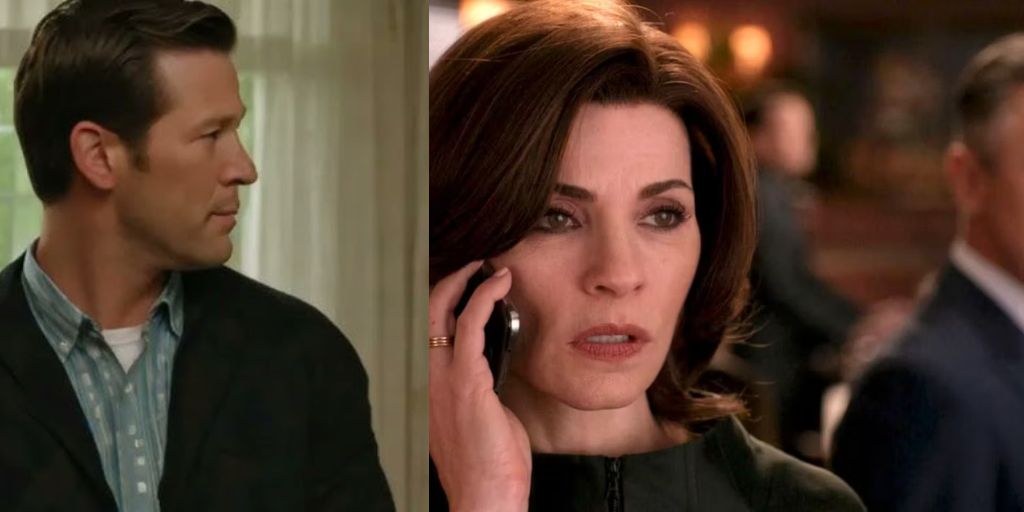In recent years, many films have explored the topic of marriages falling apart. Movies like Marriage Story and Anatomy of a Fall have tackled this theme.
However, if a new film does not bring something unique to the table, it risks being seen as just another version of what has come before. Millers in Marriage is one such film that does not stand out. It does not add much to the conversation, focusing mainly on sadness.
Directed and written by Edward Burns, the film follows three siblings whose marriages are falling apart. Each sibling faces different problems in their relationships, but the results are all unsatisfying.
The film starts with Eve (Gretchen Mol) calling her siblings because her husband Scott (Patrick Wilson) is missing after a business trip.
It quickly becomes clear that her main issue is Scott’s alcoholism. This problem leads Eve to worry about him constantly and put her own needs, especially her music career, on hold.
Eve’s sister, Maggie (Julianna Margulies), is also having marriage troubles with her husband Nick (Campbell Scott).
Maggie has adjusted well to being an empty nester and continues to write her novel. However, Nick struggles with writer’s block, which annoys Maggie and drives them further apart.
The third sibling, Andy (played by Burns), is recently divorced and trying to start a new relationship with Renee (Minnie Driver). He still has feelings for his ex, Tina (Morena Baccarin).
Over the course of the film, viewers watch these three relationships unfold as the characters decide whether to stay with their partners or separate.
Millers in Marriage starts with a promising idea and a talented cast but fails to deliver. Instead of offering a hopeful or balanced view of these relationships, the film drags on the characters’ misery.
The lack of focus on positive aspects of their romantic lives makes it hard for viewers to care about their happiness.

Additionally, the supporting cast is more interesting than the main characters. Minnie Driver, Benjamin Bratt, and Campbell Scott give standout performances, making them more engaging than the leads.
A scene where Scott realizes his wife’s feelings through her manuscript is particularly moving. This makes one wonder if the film would have been better if it focused more on the supporting characters.
While the film does have a few redeeming moments, such as the authentic family interactions between the siblings, it ultimately fails to be an important narrative about broken marriages.
Without finding the couples’ pasts or providing deeper character insights, Millers in Marriage leaves viewers with a sense of dissatisfaction and frustration from the melodrama.
In the end, Millers in Marriage leaves audiences wanting more depth and insight into its characters and their relationships.
The film struggles to build emotional connections with the main trio of siblings, making it difficult for viewers to invest in their marital struggles.
Without any flashbacks or detailed backstories, we never fully understand why their relationships are falling apart, which prevents the movie from delivering the depth it aims for.
The absence of any positive moments in their relationships further alienates the audience, as we are left watching their continuous misery without much hope for resolution.
The supporting cast, particularly Minnie Driver and Campbell Scott, manage to add emotional resonance and promote their roles, creating moments that are far more engaging than those of the lead characters.
While there are a few touching scenes that capture authentic sibling dynamics, these moments are too sparse to save the film from feeling incomplete.
Millers in Marriage feels more like a missed opportunity. It has the potential to be a powerful commentary on the complexities of marriage, but it falls short due to underdeveloped characters and lack of narrative depth.
Audiences may leave feeling emotionally drained, but not in a way that leaves them fulfilled or reflective.





